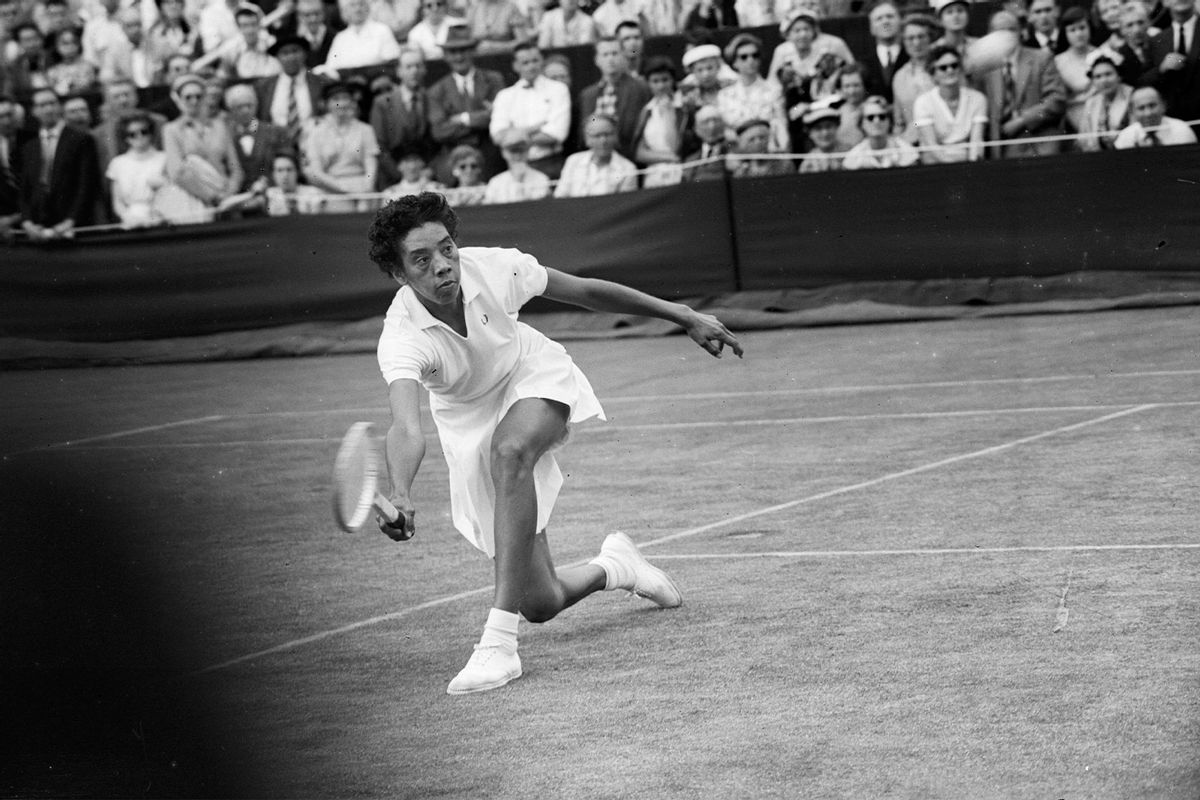It’s the end of August, which means the U.S. Open is underway at the Bille Jean King National Tennis Center in Flushing Meadows, Queens, in New York. As the only Grand Slam tournament to be played every year since its inception, the U.S. Open retains a singular quality.
But it’s not merely the tournament's longevity that has cemented it as special over the years — it’s the players. As such, it’s important to revisit one of the most pioneering figures to grace the U.S. Open's grounds, the trailblazing Althea Gibson. Gibson made history in 1957 as the first Black American to win the U.S. Open title, paving the way for other standout Black U.S. female tennis players like the Williams sisters, Zina Garrison, Chanda Rubin and now younger stars such as Coco Gauff, Naomi Osaka, and Sloane Stephens.
Fans based in the U.S. can tune in to watch the U.S. Open — which runs from Aug. 26 through Sept. 8 — on the ESPN channel or on the ESPN app.
If you’re interested in learning more about one of the most legendary characters in the history of the Grand Slam, read on to find out a few key facts about Gibson and her revolutionary athletic career.
Gibson was 23 years old when she entered the public tennis scene in the summer of 1950 at the U.S. Nationals Championships at the West Side Tennis Club in Forest Hills, Queens, making her the first Black athlete to play in a U.S. national tennis competition. According to the U.S. Open’s official website, a thunderstorm halted Gibson’s second-round match against three-time Wimbledon champion Louise Brough. When a bolt of lightning struck one of the ornamental stone eagles atop the stadium, Gibson reportedly said, “It may have been an omen that times were changing.”
“At last, at last,” Gibson said, per an excerpt from a 2023 biography of the tennis player by author Sally H. Jacobs.
“My congratulations,” the Queen responded. “It must have been terribly hot out there.”
“Yes, Your Majesty,” Gibson said, “but I hope it wasn’t as hot in your box. At least, I was able to stir up a breeze.”
Shortly after her Wimbledon victory, Gibson returned home to a ticker tape parade in New York City, becoming the second Black American after Jesse Owens to be honored in that way.
A month later, she won the U.S. National Championship (the precursor of the U.S. Open) against her old nemesis Louise Brough. "Winning Wimbledon was wonderful", she wrote at the time, "and it meant a lot to me. But there is nothing quite like winning the championship of your own country." The milestone would not be repeated by a Black female tennis player until 43 years later when Serena Williams won the first of her six U.S. Opens.
She repeated her Wimbledon and U.S. National singles titles victories in 1958, and was named Female Athlete of the Year by the AP for both 1957 and 1958.
All this glory also arrived with other firsts as she became he first Black woman to appear on the covers of Sports Illustrated and Time.
Gibson had a prolific career on and off the court. After retiring from amateur tennis in 1958, Gibson turned toward the professional field and the entertainment industry. She began singing, even releasing a jazz record, “Althea Gibson Sings,” through Dot Records in 1959. Her vocal talent saw her invited to perform two tracks off the album on “The Ed Sullivan Show.” That same year, Gibson starred alongside John Wayne in John Ford’s Civil War-era western film “The Horse Soldiers.”
After struggling to make significant headway in tennis, Gibson ultimately turned to golf. In 1963, she became the first Black golfer in the Ladies Professional Golf Association (LPGA.) "The siren song of golf was barely audible to me when I retired from amateur tennis," Gibson wrote in her 1968 autobiography, "So Much to Live For," per ESPN. "But it was never completely out of hearing, and soon it was to grow so loud that I would not be able to resist its seductiveness."
Despite never winning an event throughout the 14 years she played, Gibson’s inaugural appearance in the sport came at a meaningful juncture, during the civil rights movement of the 60s. "If I made it, it's half because I was game enough to take a lot of punishment along the way and half because there were a lot of people who cared enough to help me," Gibson observed in an earlier memoir, "I Always Wanted to Be Somebody."
Read more
about this topic



Shares